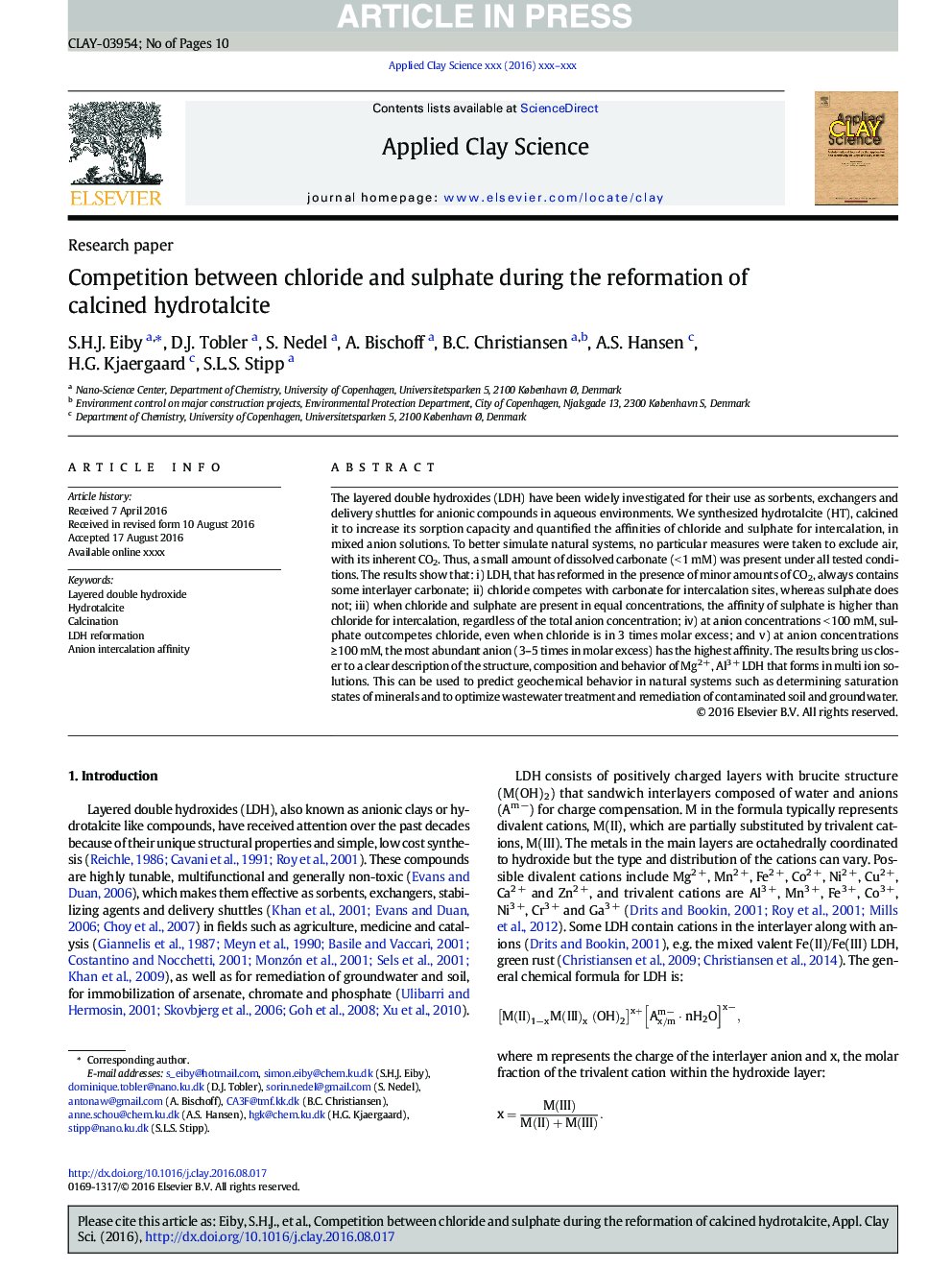| Article ID | Journal | Published Year | Pages | File Type |
|---|---|---|---|---|
| 5468800 | Applied Clay Science | 2016 | 10 Pages |
Abstract
The layered double hydroxides (LDH) have been widely investigated for their use as sorbents, exchangers and delivery shuttles for anionic compounds in aqueous environments. We synthesized hydrotalcite (HT), calcined it to increase its sorption capacity and quantified the affinities of chloride and sulphate for intercalation, in mixed anion solutions. To better simulate natural systems, no particular measures were taken to exclude air, with its inherent CO2. Thus, a small amount of dissolved carbonate (< 1 mM) was present under all tested conditions. The results show that: i) LDH, that has reformed in the presence of minor amounts of CO2, always contains some interlayer carbonate; ii) chloride competes with carbonate for intercalation sites, whereas sulphate does not; iii) when chloride and sulphate are present in equal concentrations, the affinity of sulphate is higher than chloride for intercalation, regardless of the total anion concentration; iv) at anion concentrations < 100 mM, sulphate outcompetes chloride, even when chloride is in 3 times molar excess; and v) at anion concentrations â¥Â 100 mM, the most abundant anion (3-5 times in molar excess) has the highest affinity. The results bring us closer to a clear description of the structure, composition and behavior of Mg2 +, Al3 + LDH that forms in multi ion solutions. This can be used to predict geochemical behavior in natural systems such as determining saturation states of minerals and to optimize wastewater treatment and remediation of contaminated soil and groundwater.
Related Topics
Physical Sciences and Engineering
Earth and Planetary Sciences
Geochemistry and Petrology
Authors
S.H.J. Eiby, D.J. Tobler, S. Nedel, A. Bischoff, B.C. Christiansen, A.S. Hansen, H.G. Kjaergaard, S.L.S. Stipp,
